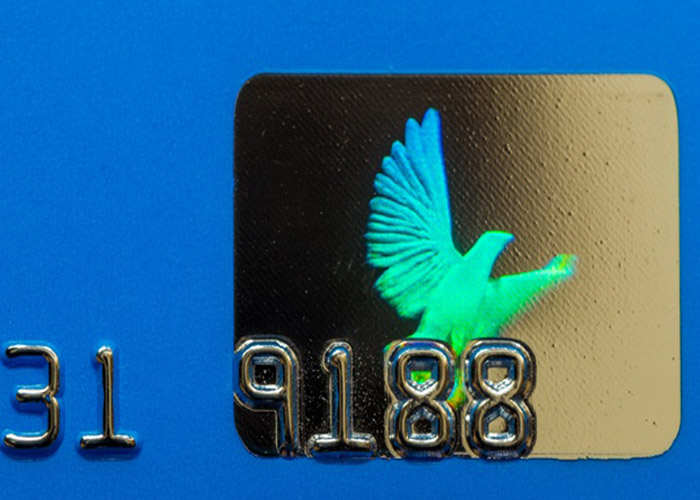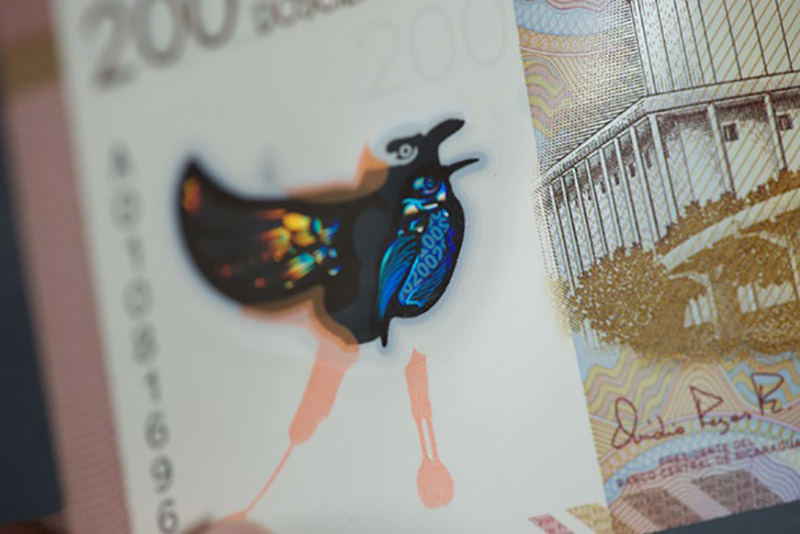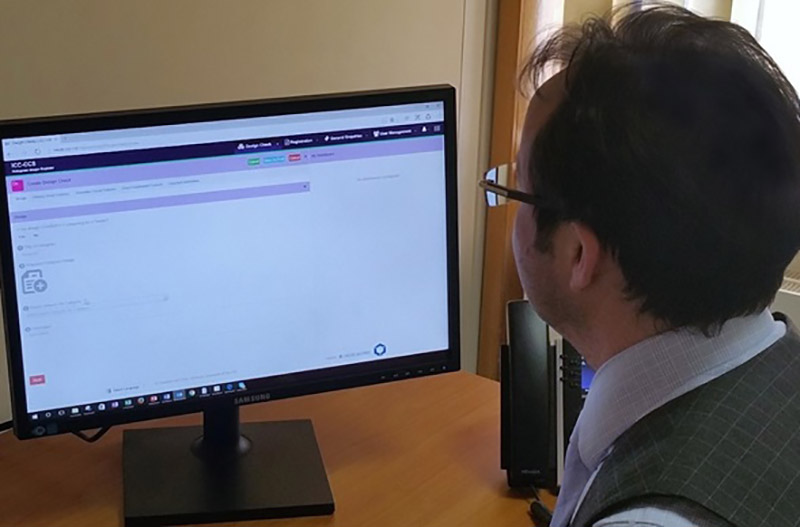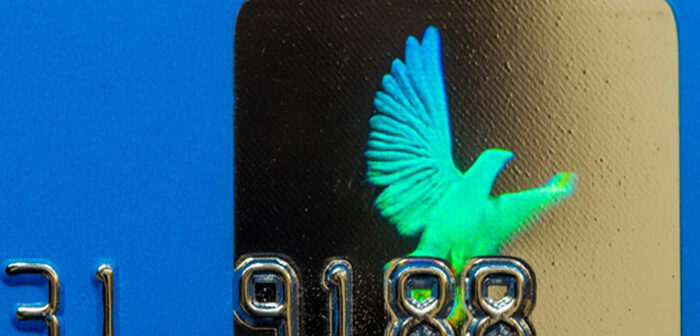
Written by Dr Mark Deakes, chair of the International Hologram Manufacturers Association. Dr Deakes considers the role of holograms in protecting intellectual property (IP) and the Security Image Register.
There can be little doubt about holography’s role as an active technology protecting intellectual property rights in the modern era. The most obvious owners of intellectual property rights are so-called ‘brand owners’, who own the brand names which appear on many of the traded goods familiar to consumers around the world – the better known the name, the more valuable the brand and hence the IP associated with that brand.
Myriad examples include Coca Cola, Microsoft, Apple, Amazon, McDonald’s, Louis Vuitton and Visa. But as the owners of these brands are acutely aware, the value of brand lies in the number of goods sold bearing their brand name – and the more popular the brand, the greater the incentive for unscrupulous counterfeiters to copy it.
Many set up unauthorised manufacturing facilities to produce goods having the appearance of the genuine article before giving it the appearance of legitimacy by printing the brand name on it. In the case of Apple, the brand recognition comes not through a written name but the depiction of an apple with a bite taken out of it. This is known as a logo and is registered, along with the written name, by the owner of that IP.
What these companies have in common is that, in addition to owning the IP associated with a recognised brand name, they own the means of manufacturing the genuine products bearing that name. All of the companies mentioned above have legal departments whose job is to hunt down and prosecute anyone who attempts to profit from the unauthorised use of the name or logo of the genuine owner of the brand.
Often, the unauthorised product – referred to as a fake or counterfeit item – is so convincing in its appearance that the brand owner has resorted to a depiction of the genuine brand name (or logo) in a form which is instantly recognisable but which cannot be copied. This is where holography enters.

Global applications
Unlike printing, holograms are produced using lasers to create images in colours which appear to have depth and movement and are very difficult to create compared with conventional printing, and even the most sophisticated scanners and digital techniques cannot accurately reproduce their visual appearance.
It’s for this reason that corporates, central governments, issuers of ID documents and security printers who produce banknotes have embraced holographic technology to authenticate their products – they use holographic technology to identify genuine branded goods and will continue to do so as a way of protecting brand and intellectual property.
Even iconic sports brand names such as FIFA World Cup, the Olympic Games and Major League Baseball have found it useful to control production of their licensed merchandise by means of holograms.
The production of the goods licensed for manufacture using the IP owners’ logo is royalty based. This means that the licensee pays an upfront fee for the right to manufacture products under the name of the licensor followed by a royalty payment for each item sold. So, the licensor appoints a third-party manufacturer of the holographic security labels who will act as the check on how many items are sold. The labels are independently produced, serialised and shipped to the licensees and a record is kept of which numbers were sent to whom. This system avoids under reporting of the quantity of goods produced while, at the same time, distinguishing between legitimate goods and counterfeits. Thus, the investment of the licensor in the IPR of the licensee is also protected.
It is worth pointing out the scale of the business protected by holography. For example, the major sports league of the USA, the NFL, secured annual revenues in 2023 in excess of USD 2.5 billion from the sale of merchandise, and every genuine item from a cap, a sweat shirt to a key fob, shows its legitimacy with a hologram. Add to that all the pharmaceutical and healthcare products, other sporting goods, software and entertainment products and the numbers are staggering – all protected with a hologram.
The World Health Organisation estimates that up to 25% of the medicines consumed in some developing countries are counterfeit or substandard and that annual earnings from the global sales of fake and substandard medicines are over $32 billion, so the move will distinguish clearly those products with unintentional quality defects resulting from manufacturing or distribution errors from ones that have been deliberately falsified.
And what of the intellectual property rights of holograms? There is no specific law governing the copyright of holograms, which are treated as copyrightable insofar as they are the result of one or more original creative works. The IHMA Hologram Copyright Guidelines point out that: ‘The Berne Convention is an international agreement, subscribed to by over 90 countries, which sets out minimum requirements on copyright law. Each member country’s copyright laws are required to at least meet the standards set out by the Berne Convention.

Security Image Register
In a changing world, where securing IP remains paramount, organisations continue to embrace holography as part of integrated strategies to secure their brands. In turn, the secure registry of holographic images, established by the IHMA to safeguard hologram copyright and underpin the use of holograms in authentication and security printing, has now been expanded to include all optically variable security features, relaunching as the Security Image Register (SIR). The move represents a beneficial step forward, more accurately reflecting the way holograms and other OVDs are designed and used – undoubtedly facilitating an increase in the registration of images to secure their integrity.
The rebranded SIR reflects the changing dynamics of the global security printing industry and security features with holograms increasingly being incorporated and integrated with other optically variable devices (OVDs) to provide advanced anti-counterfeiting solutions, but they are only one – albeit an important one – of a number of different imaging technologies that offer colour change, movement, animation and/or 3D effects.
The expanded register introduces image registration to the full spectrum of optical security manufacturers – important in a world where the merging of overt technologies to deliver integrated holistic solutions is increasing – providing a global database that protects the security image by recording and identifying all copyright associated with each design and manufacture of a security image. Each registration will be allocated a unique reference number that can be tracked to support authentication of the image and its copyright.
The Primary Visual Feature selection has been updated to include a choice of 13 current optical technologies that now fall with a general OVD (Optically Variable Device) category. They include micro-lens arrays, micro-mirrors, plasmonics, nano-gratings, colour change, caustics, polarisation, photonic crystals, special print-generated effects etc, or a combination of these. The HIR phrase and logo has also been replaced by Security Image Register phrase and logo. While the word ‘hologram’ is replaced by OVD.
The centrally held global database of secure images continues to be operated on behalf of the IHMA by the Counterfeiting Intelligence Bureau under the strictest confidence and security that supports ISO14298* on behalf of members. In addition to hologram producers, the SIR will be available to all manufacturers of secure optical variable devices, security printers and designers of documents. This enables them to verify that their security design, or elements of the hologram design, do not infringe copyright or allow the unintentional copy of existing security images. The image registration is completed once the design has received clearance. The SIR will also be accessible to law enforcement agencies, allowing them to check for the provenance of a design when they need information on a suspect feature.
Integrated solution
As concern grows for counterfeit products stealing brand identity and diverted product undermining legitimate distribution channels, so the need for security labels and seals also grows. The label is the most convenient and cost-effective way of delivering holographic security technology – overt, covert, and forensic and track and trace, all in a single hit.
Compared to foiling techniques, label applicators are relatively inexpensive and operators require far less training than their foiling counterparts. Therefore, the barriers to entry with customers are far lower for label suppliers. Moreover, tamper evidence can be incorporated into holographic labels making them ideal for closure seals for cartons. Thus, another important functionality can be added in addition authentication and tracking.
There are many security technologies but holographic – or optically variable security features, as the IHMA prefers to call them – remains one of the most tried and tested technologies endorsed and used by some of the world’s most prestigious brand owners. The evolving anti-counterfeiting role of holograms lies in their ability to combine authentication with detection – and this is why organisations from manufacturers through to central governments and law enforcement continue to champion them in modern anti-counterfeiting strategies.
*ISO 14298 – Management of Security Printing (and Security Foil) Processes specifies requirements for the management of security printing processes. Its goals are:
- To improve the security for the industry in regards to security printing and aid the fight against fraud and forgery
- To reduce trade barriers by encouraging uniform practices around the world
- Satisfy clients’ increasing security needs






